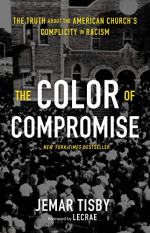
|
| Name: _________________________ | Period: ___________________ |
This quiz consists of 5 multiple choice and 5 short answer questions through Chapter 3-4.
Multiple Choice Questions
1. Who were the first Europeans to reach the Americas?
(a) The German.
(b) The English.
(c) The Scandinavians.
(d) The Spanish.
2. How did "paternalist" (66) white Christians view Black people?
(a) As dangerous and threatening criminals.
(b) As legal and soacial equals.
(c) As brothers and sisters in spirituality.
(d) As helpless and ignorant children.
3. According to slave codes, what determined whether a child was born free or enslaved?
(a) The mother's slave status.
(b) The father's slave status.
(c) The father's religion.
(d) The mother's religion.
4. Which revivalist preacher used profits from slave labor to build an orphanage?
(a) Solomon Stoddard.
(b) Richard Allen.
(c) George Whitefield.
(d) Jonathan Edwards.
5. How many people perished during the Middle Passage?
(a) About 750,000.
(b) About 1 million.
(c) About 2 million.
(d) About 500,000.
Short Answer Questions
1. According to Tisby, what is required to achieve "reconciliation" (15)?
2. During the early colonization of the Americas, which crop was most profitable?
3. What was the term used for the religious movement that emphasized a personal encounter with God?
4. According to Tisby, which of the following statements about Thomas Jefferson is NOT true?
5. According to Tisby, during which period of American history did race NOT determine a person's station in society?
|
This section contains 221 words (approx. 1 page at 300 words per page) |

|




